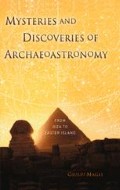Anasazi is the name given to the ancestors of the present-day Hopi and Zuni tribes that live along the Rio Grande in New Mexico and Arizona. The Anasazi civilization flourished in the centuries around 1000 AD in the region that corresponds to the border area joining Utah, Colorado, Arizona, and New Mexico. This is not a particularly fertile area, but the Anasazi succeeded nevertheless in building a thriving economy based on hunting and efficient farming (Brody 1990). The Anasazi dwelt in villages that often boasted monumental architecture. Around 1250 AD, however, their life changed drastically: many villages were abandoned, and new settlements were built in out-of-the way, almost inaccessible, places. Abandonment of sites is a phenomenon common also to other civilizations of the Americas, but the Anasazi version was extremely striking and difficult to account for. For example, the Anasazi constructed an enormous 420-room building at Sand Canyon, which was created, inhabited, and abandoned, all in the space of 50 years around 1200 AD.
We have little information about the life and society of the Anasazi. As far as we know, they did not have writing, and until recently they were thought to be (along with the Mayas) a sort of “sons of the flowers.” This view, however, now has been modified considerably. For instance, at the so-called Castle Rock site, in Colorado, also inhabited for an extremely short period between 1256 and 1274, there is no doubt that the occupation ended in a massacre. The human remains discovered there show unmistakable signs of can nibalism and scalping. It is thus clear that isolation in inaccessible villages was due to the need for defense. And yet this question of abandonment is far from being fully explained, although there is evidence of repeated droughts, invasions, and social and demographic tension (Nelson and Scachner 2002). It is also possible, as we shall see, that the Anasazi social customs, religion, and way of thinking played a role in this large-scale desertion and to further explorer these issues it is essential to trace their astronomical ideas, as the study of celestial cycles was undoubtedly one of the basic constituent of their very existence.
Access this chapter
Tax calculation will be finalised at checkout
Purchases are for personal use only
Preview
Unable to display preview. Download preview PDF.
Author information
Authors and Affiliations
Rights and permissions
Copyright information
© 2009 Springer-Verlag New York
About this chapter
Cite this chapter
Magli, G. (2009). Straighr road , circle Buildings, and supernova. In: Mysteries and Discoveries of Archaeoastronomy. Springer, New York, NY. https://doi.org/10.1007/978-0-387-76566-2_7
Download citation
DOI: https://doi.org/10.1007/978-0-387-76566-2_7
Published:
Publisher Name: Springer, New York, NY
Print ISBN: 978-0-387-76564-8
Online ISBN: 978-0-387-76566-2
eBook Packages: Physics and AstronomyPhysics and Astronomy (R0)

